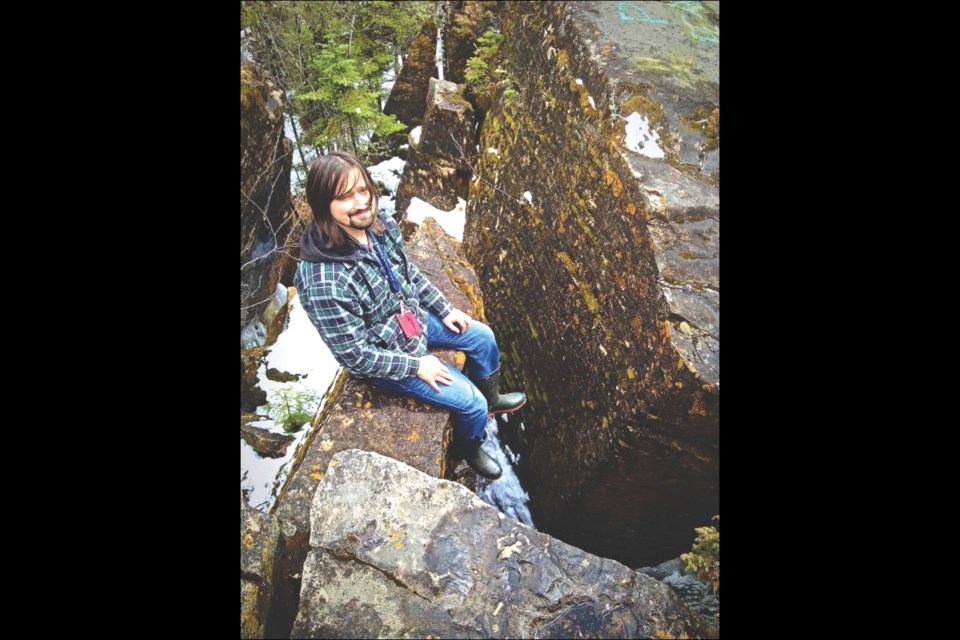“Watch your step.”
Never before had that familiar piece of advice, offered this time by a friendly convenience store clerk who had just pointed me in my desired direction, held such importance. That much I was about to discover.
I hopped in my car and started down the bumpy gravel road that would take me to the famous limestone crevices outside Denare Beach.
My only memories of the intriguing rock ruptures were decidedly fuzzy. I was seven or eight the last time I ventured amid the magnificent cavities and caverns.
I had never really got as much out of the experience as I had hoped, having been justifiably constrained from enjoying all the vantage points by my adult entourage. Now with my trusted camera in hand, I was going to explore every nook and cranny.
A dozen minutes pass before I make a sudden left turn down an unmarked road, which ends quickly at a small crescent. I rise from my dusty mode of transportation and head toward the beginning of a well-worn path.
The first sign that this won’t be an ordinary hike through the woods meets me early on. Stretching across the trail is a break in the ground that appears innocent enough from just a few steps away.
But as I extend my foot over the crack, I am surprised at my inability to see the bottom of the darkness, even upon an effortful second glance.
Just a short jaunt later I find myself putting the convenience store clerk’s advice to very advantageous use. Intermingled with the vividly green pine trees are just a few of the many enormous chasms I have come to view. If not already in awe, I soon would be.
Normally the sights we see as children aren’t nearly as captivating when revisited in adulthood. Yet as I softly step around these premises, I must admit that these giant holes in the earth are every bit as impressive as I recall.
And they’re equally intimidating, just waiting for me to take one false step. My thoughts go back to a warning I had read on the Internet earlier in the day: “It is very easy to slip and fall a long way. Rescue would take a long time because this is an isolated area.”
I turn on my camera and look the beast in the eye. “Click.” Hmmm, I can get a better angle than that. “Click.”
With each photo I become more comfortable with my surroundings. Soon I’m climbing downward for a closer look. Many of these gaps, up to 40 feet in depth, are carpeted with spotless moss. It’s barely September but some of the deeper hollows harbour snow and ice that have been coldly shielded from the sun’s blazing rays. Mother Nature has simply painted a beautiful picture here.
But there are some signs of human interference. A few beer cans and bottles litter the area, both inside and outside the steep basins. This tourist draw apparently doubles as a hot party spot, even though this is the absolute last place people with alcohol in their system should ever be. The rocks have also been used as a canvas for graffiti artists. One work is purely mind-boggling, not because of the talent behind it, but because it’s not at all apparent how the painter got to the chosen location.
Ask scientific types how these crevices came about and they will leave you scratching your head.
They’ll speak of the Ordovician period 500 million years ago, carbonate rock and something called the Red River Formation.
I prefer the layman’s explanation. Water seeped into thin cracks along the rock. When water freezes, it expands. The repeated enlargement of ice during the freeze thaw cycle in fall and spring gradually (very, very gradually) wedged the rocks apart and eventually formed these marvelous attractions.
Historically speaking, the crevices aren’t all that old, having been formed since the glaciers from the last ice age receded from the area some 10,000 years ago.
Since their discovery, the rock voids have truly become a regional phenomenon.
Area tourism promoters have for years listed them as a premier point of interest for visitors, right up there with popular offerings in nearby Flin Flon like the famous Flinty statue and the scenic boardwalk surrounding Ross Lake.
After cramming as many photos as allowable on my camera over the course of an hour, the unrelenting mosquitoes finally force me to turn back. Several careful steps and a few foot-numbing jumps (not recommended!) later, I drop down on my car seat, still enthralled by what I had just seen. As captivating as they are dangerous, the limestone crevices were most certainly worth the long wait.
You just have to watch your step.
Note: The crevices are located about 15 kilometres south of Denare Beach, down an unmarked trail found one km north of Meridian Creek on Hwy 167 (the South Weir Rd), along the south shore of Amisk Lake. As this is not an official tourist site, there is no signage and there are no guardrails or other safety measures in place.
(This story originally appeared in the October 2004 issue of Cottage North magazine).




